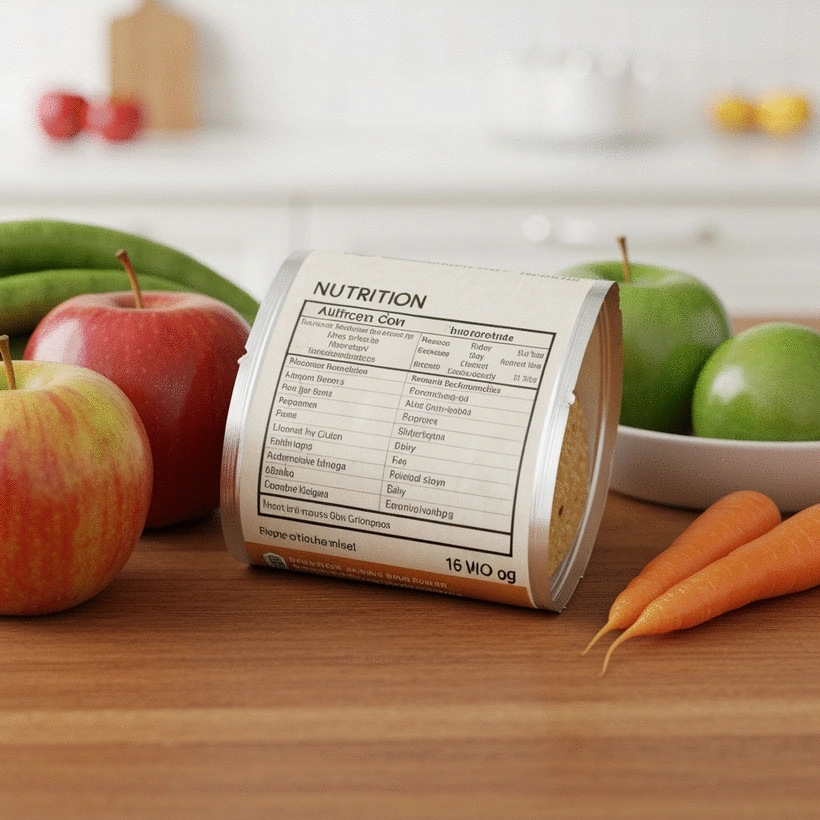Understanding Food Labels for Allergens

Food allergen labeling is not just a regulatory requirement; it’s a vital tool for ensuring safety and empowerment in dietary choices. Understanding the guidelines can make all the difference for those navigating food allergies.
What You Will Learn
- The Food Allergen Labeling and Consumer Protection Act (FALCPA) requires clear labeling of eight major allergens: milk, eggs, peanuts, tree nuts, fish, shellfish, wheat, and soybeans.
- The FASTER Act of 2021 expanded allergen labeling to include sesame, highlighting the need for continual vigilance in food safety.
- The FDA enforces compliance with allergen labeling laws, conducting inspections and ensuring manufacturers follow regulations to maintain food safety.
- Proactive allergen management includes checking ingredient lists, understanding advisory statements, and maintaining clear communication about allergies.
- Utilizing resources such as community forums, educational workshops, and mobile apps can enhance knowledge and support for individuals dealing with allergies.
- Having an emergency action plan is crucial, including identifying allergens, carrying an epinephrine auto-injector, and educating friends and family on recognizing allergic reactions.
Key Milestones in Food Allergen Labeling Legislation
This visual highlights the evolution of major food allergen labeling regulations, showcasing key acts and their impact on identifying common allergens.
FALCPA (2004): 8 Major Allergens
Mandated clear labeling of these allergens:
- Milk, Eggs, Peanuts, Tree Nuts
- Fish, Shellfish, Wheat, Soybeans
FASTER Act (2021): Sesame Added
Expanded the list of major allergens to include:
- Sesame (now the 9th major allergen)
- Increased transparency & reporting
- Clearer allergen definitions
FDA's Role: Compliance & Enforcement
The FDA ensures adherence to FALCPA and FASTER Act by:
- Overseeing implementation
- Conducting inspections
- Enforcing penalties for non-compliance
Proactive Allergy Management Steps
Essential actions for individuals with allergies:
- Always check ingredient lists
- Pay attention to advisory statements
- Communicate allergies clearly
Understanding Food Allergen Labeling Regulations
Food allergen labeling is essential for anyone navigating allergies, and it can be a real game changer in our daily lives. Knowing what's in our food not only helps us avoid allergic reactions but also empowers us to make informed choices about what we consume. At I’m Allergic, we’re dedicated to helping you understand these regulations so you can live safely and confidently.
In this section, we’ll explore the key regulations that govern food allergen labeling, focusing on important acts and compliance measures. This knowledge is crucial for everyone, whether you’re dealing with allergies yourself or supporting someone who is.
Insights into the Food Allergen Labeling and Consumer Protection Act (FALCPA)
The Food Allergen Labeling and Consumer Protection Act, or FALCPA, was a significant milestone in food regulation. Enacted in 2004, it mandates that food manufacturers clearly label the presence of common allergens on packaging. This law specifically addresses eight major allergens, as designated by the FDA:
- Milk
- Eggs
- Peanuts
- Tree nuts
- Fish
- Shellfish
- Wheat
- Soybeans
FALCPA has made it easier for those with allergies to identify safe foods. However, it's important to remain vigilant, as cross-contamination can occur, and not all allergens are covered under this law.
Key Updates from the FASTER Act and Major Allergen Listings
In 2021, the FASTER Act introduced important updates to allergen labeling by adding sesame as a major allergen. Now, it is crucial for consumers to be aware of this change, as many products may contain sesame, often without clear labeling. This is a win for food allergy advocates and helps protect even more people from accidental exposure.
Additionally, the FASTER Act emphasizes the need for better allergen identification and reporting, pushing manufacturers to be transparent about their processes. The FDA provides guidance documents on these regulations to ensure clear understanding and compliance. Here are some key points to note:
- Increased transparency for allergen reporting
- Clearer definitions of what constitutes a major allergen
- More robust consumer awareness campaigns
With these enhancements, we’re seeing a more inclusive approach to food safety, which truly matters for individuals like you and me who live with allergies!
Role of the FDA in Food Allergen Labeling Compliance
The Food and Drug Administration (FDA) plays a critical role in ensuring compliance with food allergen labeling laws. They oversee the implementation of FALCPA and the FASTER Act, ensuring that manufacturers adhere to the regulations. The FDA conducts inspections and enforces penalties for non-compliance, which helps maintain a level of safety in our food supply.
It’s essential to remember that while the FDA provides guidelines, it’s still our responsibility to check labels and stay informed. This proactive approach to identifying allergens can empower you in your daily life! Keeping up with these regulations not only protects you but also helps promote awareness about food allergies in our communities.
Interactive Poll: Your Label Reading Habits
How often do you read food labels to check for allergens? Your insights are valuable!
Frequently Asked Questions About Food Allergen Labeling
Summarizing Key Points on Food Labels for Allergens
When it comes to managing food allergies, understanding food labels is a critical first step. Being vigilant about reading labels not only helps you avoid allergens but also empowers you to make informed choices about the foods you consume. Remember, knowing how to navigate food labels can significantly enhance your safety and confidence in your dietary choices.
With regulations like the Food Allergen Labeling and Consumer Protection Act (FALCPA) in place, it's essential to stay updated on how these laws affect labeling practices. This ensures that you are always equipped to recognize the potential risks associated with specific ingredients. For more comprehensive information and resources on food allergen labeling, Food Allergy Awareness provides valuable insights.
The Importance of Vigilance in Allergen Management
Staying vigilant involves more than just reading labels; it requires consistent awareness and proactive measures. Here are some key points to keep in mind regarding allergen management:
- Always check ingredient lists before purchasing and consuming any food product.
- Pay attention to advisory statements that may indicate cross-contamination.
- Keep a personal list of your allergens readily available to reference.
- Communicate your allergies clearly when dining out or shopping.
By keeping these points front-of-mind, you can take control of your allergy management journey and reduce the risk of accidental exposure. Remember, a little knowledge goes a long way!
Encouraging Proactive Steps for Allergy Awareness
Resources for Continuous Learning and Support
In a world where food options are plentiful, having the right resources can make all the difference. At I’m Allergic, we strive to provide valuable insights and educational materials to support your journey. Here are some essential resources you might find helpful:
- Online forums and communities for sharing experiences and tips.
- Webinars and workshops focused on allergy awareness and management.
- Books and articles on navigating life with allergies.
- Mobile apps designed for allergy management and label scanning.
Utilizing these resources can help build a stronger knowledge base and foster a sense of community among those affected by allergies.
Join the Conversation: Share Your Experiences with Food Allergen Labeling
Your experiences matter! I encourage you to share your stories regarding food allergen labeling. What challenges have you faced? What tips do you have for others? Engaging in conversations can provide support and insight into the everyday realities of living with food allergies.
Consider reaching out through social media or community groups to foster discussions that can benefit others. By sharing your insights, you not only help yourself but also become a beacon of support for someone else navigating similar challenges.
Emergency Action Plan: Preparing for Allergic Reactions
Having an emergency action plan is vital for anyone managing food allergies. Here are the steps to take when preparing for potential allergic reactions:
- Identify your allergens clearly and communicate them to family and friends.
- Always carry your epinephrine auto-injector, if prescribed, and ensure others know how to use it.
- Establish a plan for what to do in case of an allergic reaction, including calling emergency services.
- Educate those close to you about recognizing signs of an allergic reaction.
By having a solid plan in place, you can navigate your daily life with greater peace of mind. Remember, preparation is key to staying safe!
Recap of Key Points
Here is a quick recap of the important points discussed in the article:
- The Food Allergen Labeling and Consumer Protection Act (FALCPA) mandates clear labeling of eight major allergens: milk, eggs, peanuts, tree nuts, fish, shellfish, wheat, and soybeans.
- The FASTER Act expanded allergen labeling to include sesame as a major allergen, enhancing consumer safety.
- The FDA oversees compliance with allergen labeling laws, but consumers must remain vigilant and check labels regularly.
- Always check ingredient lists and advisory statements for allergens and cross-contamination warnings.
- Utilize available resources such as online communities, educational materials, and apps to support allergy management.
- Establish an emergency action plan to be prepared for allergic reactions, including carrying epinephrine auto-injectors if prescribed.






